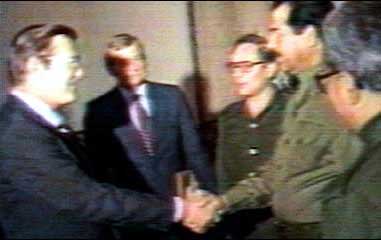9-11 Hero: Physics Professor Steven Jones
Professor Jones has put the nail in the coffin of the Official
Story of September 11th, as related to the World Trade Center building collapses.
If you are unfamiliar with these issues, and you still believe
that fires somehow "weakened"
the structural steel in those buildings, then read on:
.jpg) width=507 height=360>
width=507 height=360>
Steel Column Temperatures of 800°C Needed:
A Problem in the Argument of Bazant and Zhou
A Mechanical Engineering professor suggested that I review
a paper by Zedenek P. Bazant and Yong Zhou, which I did. Quoting:
The 110-story towers of the World Trade Center were designed
to withstand as a whole the forces caused by a horizontal impact of a large
commercial aircraft. So why did a total collapse occur? (Bazant and Zhou,
2002, p. 2.)
Correct – the WTC Towers were designed to withstand forces
caused by large commercial aircraft – we can agree on that. MIT’s
Thomas Eagar also concurs “because the number of columns lost on the
initial impact was not large and the loads were shifted to remaining columns
in this highly redundant structure” (Eagar and Musso, 2001).
We continue with Bazant & Zhou:
The conflagration, caused by the aircraft fuel spilled into
the structure, causes the steel of the columns to be exposed to sustained
temperatures apparently exceeding 800oC… (Bazant and Zhou, 2002, p.
2.)
But here we note from the recent NIST report that: “The
initial jet fuel fires themselves lasted at most a few minutes” and office
material fires would burn out within about 20 minutes in a given location.
(NIST, 2005; p. 179, emphasis added.) Certainly jet fuel burning was not enough
to raise steel to sustained temperatures above 800oC. But we continue:
Once more than half of the columns in the critical floor..
suffer buckling (stage 3), the weight of the upper part of the structure
above this floor can no longer be supported, and so the upper part starts
falling down onto the lower part below…”(Bazant and Zhou, 2002,
p. 2.)
Bazant & Zhou do not explain how “more than half
of the columns in the critical floor [can] suffer buckling” at the same
time to precipitate the complete and nearly symmetrical collapse observed.
There were 47 huge steel core columns in each Tower, and 24 such support columns
in WTC 7 (NIST 2005; NISTb, 2005).
The WTC towers were solidly constructed with 47 steel core columns and 240
perimeter steel columns. 287 steel-columns total. Many doubt that random fires/damage
could cause them to collapse straight down (official theory), and suspect
explosives.
Steel-frame: Huge core (left) is an enormous heat sink. Notice
workers standing on floor pan which is firmly attached to the interconnected
core columns.
They do NOT explain how steel-column temperatures above 800oC
were achieved near-simultaneously due to burning office materials. NIST notes
that office materials in an area burn for about 15-20 minutes, then are consumed
away (NIST, 2005, pp. 117, 179). This is evidently not long enough to raise
steel column temperatures above 800oC as required in the Bazant & Zhou
model, given the enormous heat sinks of the structures. And to have three
buildings completely collapse due to this unlikely mechanism on the same day
strains credulity. Moreover, the Final NIST report on the Towers admits:
Of the more than 170 areas examined on 16 perimeter column
panels, only three columns had evidence that the steel reached temperatures
above 250ºC… Only two core column specimens had sufficient paint
remaining to make such an analysis, and their temperatures did not reach
250 ºC. ... Using metallographic analysis, NIST determined that
there was no evidence that any of the samples had reached temperatures above
600 ºC. (NIST, 2005, pp. 176-177; emphasis added.)
Relevant to this point, Eagar noted that "Factors such
as flame volume and quantity of soot decrease the radiative heat loss in the
fire, moving the temperature closer to the maximum of 1,000 ºC."
(Eagar and Musso, 2001) While this is the maximum air temperature possible
in the WTC fires, this does not mean that the structural steel reached this
temperature in the time the fires acted. Indeed, NIST emphasizes that there
was no evidence that "any of the samples had reached temperatures above
600 ºC." This statement is consistent with their data plots of "predicted
column temperatures", which "shows maximum temperature reached by
each column" in that no temperature above 600 ºC is given for any
of the steel columns. (NIST, 2005.)
As for WTC 7, Bazant & Zhou say little but mention in
a separate “addendum” that burning natural gas might have been a
source of the needed heat (Bazant and Zhou, March 2002, p. 370). The FEMA
report (FEMA, 2002) addresses this issue:
Early news reports had indicated that a high pressure, 24-inch
gas main was located in the vicinity of the building [WTC 7]; however,
this proved not to be true." (FEMA, 2002, chapter 5; emphasis added.
Professor
Jones' White Paper:
http://www.physics.byu.edu/research/energy/htm7.html
Google Video




<< Home